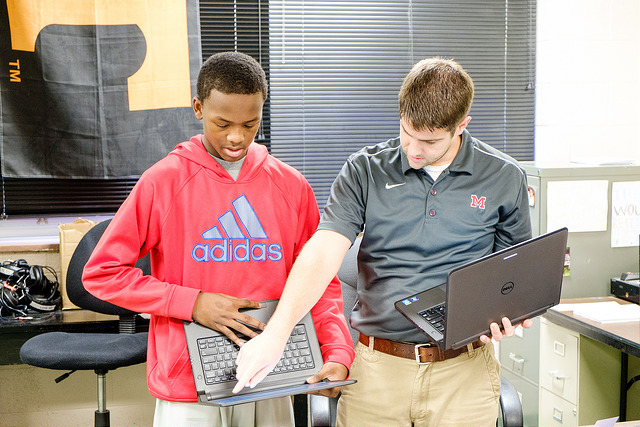“If you went to a college and you thought, ‘This is what I’m going to do and this is how it’s going to be,’ and then it turned out to be wrong or that’s not really what you wanted, I feel like you would be questioning every other decision you made before that. And that gets kind of scary.” A high school junior spoke these words to me a year ago during a focus group about preparing and planning for college.
The three other juniors sitting with us in their high school’s conference room chimed in to agree with her sentiment: “I think about it all the time.” “I don’t want to make the wrong choice.” “I’m scared I’m going to pick the wrong one.” These students attended a high school that, by all measures, is performing well. But, something is missing from their experience that has led to a deep sense of anxiety about what the future holds and their ability to navigate that future successfully.
I was sitting in that high school conference room last May as part of my work for the Tennessee Department of Education’s Setting Students up for Success initiative, a federally funded project that is contributing to the statewide effort to encourage more high school graduates to enroll in postsecondary education and earn a credential. This project seeks to use data and research-driven practices in the K-12 system to reduce barriers to postsecondary enrollment and improve students’ ability to discover and pursue a personally meaningful path to college and career.
A key part of the department’s work is to collaborate with districts and schools to consider how school culture impacts young people’s ability and readiness to plan for their future. In the next few years, more than half of the available jobs in Tennessee will require some form of postsecondary credential or training. By taking steps to grow postsecondary-going culture in our elementary, middle, and high schools, students will be more likely to envision themselves pursuing postsecondary education and taking tangible steps to achieve their goals.
In their indispensable book, Ready, Willing, and Able: A Developmental Approach to College Access and Success, Mandy Savitz-Romer and Suzanne M. Bouffard observe that a “young person’s postsecondary path is shaped by many people, practices, experiences, and programs,” and that there is a role for young people’s “families, friends, communities, and cultures” to play.
If we are to fully realize the promise that our state has to offer through the Governor’s Drive to 55 initiative and help more high school graduates access postsecondary education, we must adopt a holistic approach to school culture that makes career exploration and postsecondary planning everyone’s responsibility.
What does it look like when everyone in the K-12 education system takes this responsibility seriously? District leaders set the tone by communicating their expectation that all young people should be on a coherent path toward postsecondary. School leaders marshal their teachers, counselors, and staff to collaborate across roles, grade levels, and schools to work toward a shared vision of student success.
Teachers take the initiative to integrate content on careers and postsecondary options into their curriculum, helping students see the real-world value of course content and tapping into students’ aspirations. School counselors coordinate broad efforts across the school while also providing specific knowledge and expertise about postsecondary admission and enrollment. Every adult in the building talks with students about their plans for the future, asks questions to push them, and refers them to others for help when they need it.
Are you ready to embark on this important work? Are you looking to take your school’s postsecondary-going culture to the next level? I hope you’ll consider joining me and my colleagues for the Path of Choice Mini-Conference on July 12-13 in Nashville at the Music City Center. This two-day mini-conference will focus on the suggestions and resources in A Path of Choice: Building a Postsecondary-going School Culture. Registration for the mini-conference is open until June 15.

